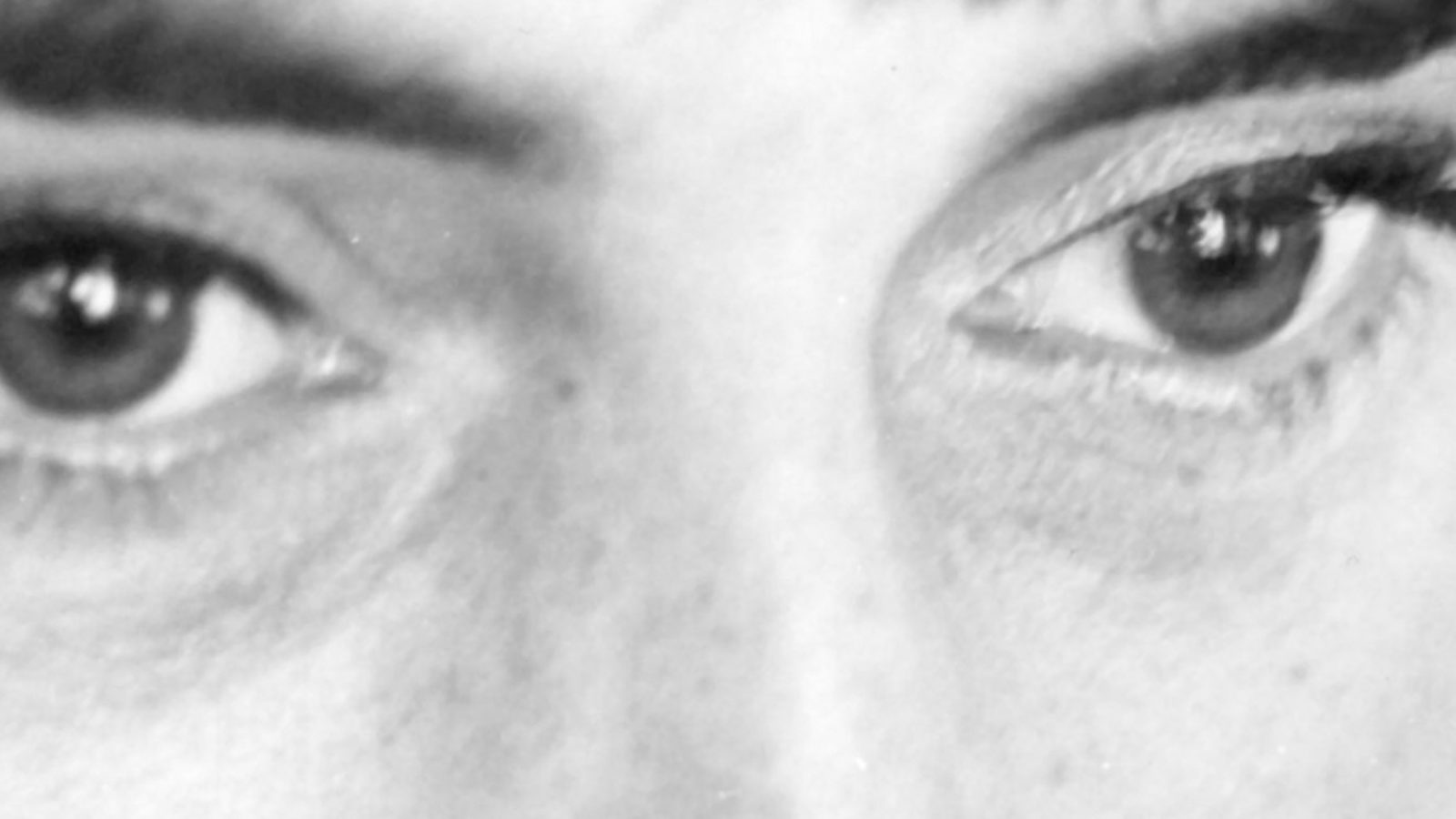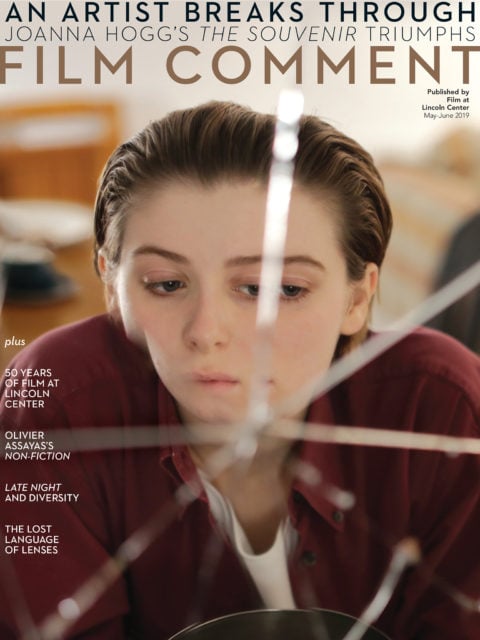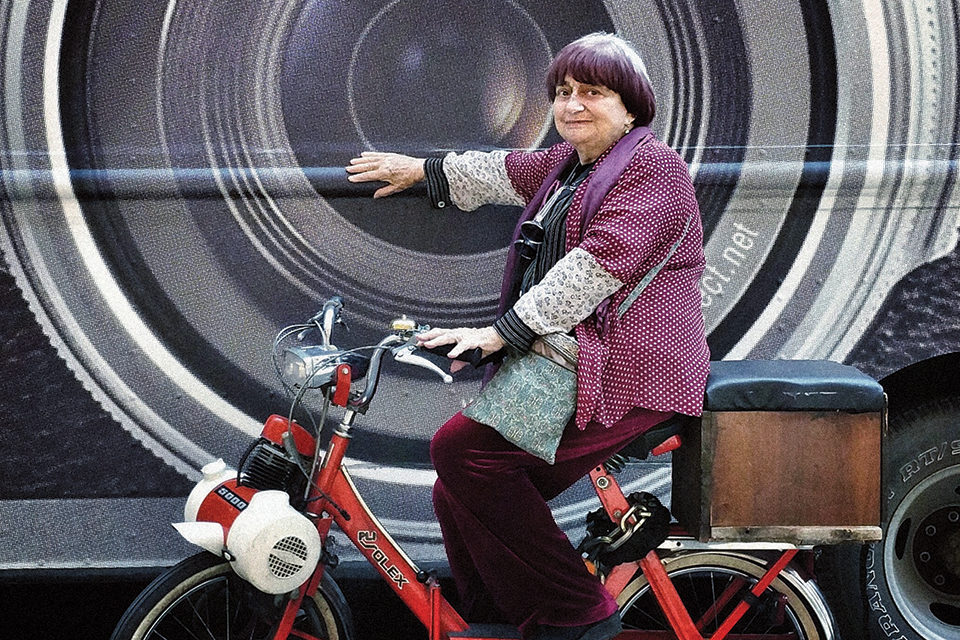By Kelley Conway in the May-June 2019 Issue

In Memoriam: Agnès Varda
With deceptively casual genius, Agnès Varda journeyed deep into the truth of experience
Agnès Varda has left us, improbably. I had good reason to think her energy and generosity would last forever. I first encountered Varda on the telephone in 2001. My written invitations for her to come to Madison for our retrospective of her work had gone unanswered, and so, perhaps lulled by her down-to-earth persona in The Gleaners and I (2000), I dialed the number of her production company, Ciné-Tamaris. She hung up on me, but not before barking, “Don’t you know how busy I am? Call me back in six months!” So I did, after which, miraculously, she spent a week in Madison the following year. Witty, sometimes irascible, Varda was marvelous with audiences and unusually generous with researchers and critics.

From the May-June 2019 Issue
Also in this issue
The polar opposite of the celebrity protected by the armor of publicists and agents, Varda traveled the world and talked to people. She introduced her films, accepted awards, spent hours in art museums in every city she visited, and always, always, gathered material for future work. When The Gleaners and I elicited thousands of appreciative letters, Varda became curious about her fans and set out to meet them, eventually profiling their gleaning practices in Two Years Later. In Sweden for a retrospective of her work, she found herself being interviewed by a journalist who had lost all of her hair. Varda, intrigued, turned her camera on the woman—a fellow filmmaker, as it turned out—and profiled her in Agnès Varda: From Here to There (2011). A sequence from The Beaches of Agnès (2008) meant to chronicle Varda’s return to her childhood home near Brussels became instead a portrait of the home’s current occupant, who detailed for Varda the finer points of his model train collection. Even in ostensibly autobiographical works, she couldn’t help telling other people’s stories.
Varda always knew how to spin gold from straw, how to turn rejection into creation. Denied state funding for one film, she spent the ensuing long weekend in a rage, hammering out a script for a new project, which was then funded. The unsparing result, Le Bonheur (1965), promises a portrait of a happy couple and a celebration of the bucolic contentment of artisans at work, but delivers instead a caustic critique of that idealized family. Living in Los Angeles with her husband Jacques Demy in 1969, Varda was denied final cut by the studio on one film but managed to make Lions Love (…and Lies)—a scathing look at old fashioned producers in the “new” Hollywood, but also a utopian story about an independent director (Shirley Clarke, in a great cameo) and three wannabe actors, played by James Rado and Gerome Ragni, fresh from the Broadway success of Hair, and Warhol muse Viva.
Near the end of Faces Places (2017), she suffers a stinging personal slight at the hands of one of her oldest friends, Jean-Luc Godard. She had traveled to Godard’s home in Switzerland with her co-director JR, eager to introduce a new friend to a long-standing one. When Godard fails to show up, Varda is devastated and unmoored. Suddenly vulnerable, her voice thickens with emotion and she trembles. In such an amiable film, the moment is arresting. The rebuke also fuels the superb conclusion of the film, an emotional conversation between Varda and JR that succinctly ties together all of the film’s motifs: Godard’s phantom presence (even before the ghosting); Varda’s diminished eyesight, yet acute perceptiveness and vision; and JR’s ubiquitous sunglasses, which he finally removes as a gesture to his friend, a concession to palliate the painful blow her ego had just suffered. This episode perfectly captures the extent to which Varda was a resilient, indefatigable artist who turned challenges and constraints into precious treasure. When I asked her to talk about Godard’s snub, she responded, eyes twinkling, “It hurt me, but it was good for the film.”

Agnès Varda, Faces Places, September 2017. Courtesy of Cohen Media Group
Varda was undaunted from the beginning. In the summer of 1954, while on a monthlong break from her work as a photographer at Jean Vilar’s Théâtre National Populaire, a 26-year-old Agnès formed her own production company, assembled a minuscule budget, and shot a film on location in the southern fishing town of Sète. Utterly outside of the film industry and unaware of the emerging European art cinema, she nevertheless created La Pointe Courte. In the fashion of William Faulkner’s The Wild Palms, an acknowledged influence, the film weaves together two narratives, one about local fishermen (nonprofessional actors filmed naturalistically), and another about a Parisian couple played by young members of Vilar’s theater company, Philippe Noiret and Silvia Monfort.
La Pointe Courte improbably combines neorealist and modernist filmmaking strategies—as if Visconti’s fishermen from La terra trema had joined Rossellini’s bickering couple from Journey to Italy or the fascinatingly wooden characters from Resnais’s Last Year at Marienbad. When Varda made her second feature in 1962, Cléo from 5 to 7, she was linked with the French New Wave. But actually, she had already demonstrated that one could tell a fresh, even frankly experimental, story with a low budget and a small crew four years before the emergence of The 400 Blows and Breathless. And given that Resnais had served as her editor on La Pointe Courte, it’s not outrageous to suggest that Varda actually pioneered the stylized formalist cinematic language of the Left Bank modernists, four years before the release of Hiroshima mon amour.
Varda’s filmmaking remained formally rigorous, but became ever more engaging. Vagabond (1985) tells the story of a young drifter wandering through rural southern France during a frigid winter. There are direct-address, documentary-style “interviews” of those who met Mona (Sandrine Bonnaire), but also a striking pattern of 12 rigorously composed tracking shots that chart the loner’s progress across fields and through villages. This gritty, unlikely protagonist, unwashed and ultimately inscrutable though she may be, remains riveting throughout. In a video essay he made for the Criterion Channel, David Bordwell rightly pinpoints Varda’s dexterity with narrative codes, characterizing the film as simultaneously a road film, a mystery, and a network narrative. Vagabond provoked strong responses in the years immediately following its commercial release, and whether intentionally or not, Varda’s work became a fulcrum for feminist analysis and mobilization in filmmaking and film criticism. Eschewing the ease of the “positive female protagonist” some advocates were calling for, Varda recasts femininity as culturally constructed, while drawing our attention to the daily lives of homeless people.
The last time I saw Agnès Varda was in the summer of 2018. Over the course of one final, precious month spent working in her archive, I watched her post photos on Instagram, deliver an extraordinary speech on women in film, tweak an installation at a gallery in the Marais, prepare a new installation for the Liverpool Biennale, and edit what would become her last film, Varda by Agnès. In the midst of all this industry, her usual mode, she underwent daily chemotherapy treatments. In the last year of her life, she was fêted at Cannes, the Cinémathèque Française, and even the Academy of Motion Picture Arts and Sciences, where she accepted an Honorary Oscar clad in silk Gucci kimono-pajamas and sneakers.
Despite the well-deserved adulation, Varda’s feet were firmly planted in the 14th arrondissement of Paris among the lives of its ordinary, or extraordinary, people. While we strolled together one afternoon to a nearby exhibition on Alberto Giacometti and Jean Genet, she went out of her way to take us past a vividly painted bus currently serving as a respite for homeless people. She said, “Isn’t that clever? People can go into the bus for a cup of tea and a shower.”
Agnès understood the simplest needs that connected her—connected every person—to the rest of us in our unadorned and vulnerable humanity. She could conceive of no greater luxury or necessity than a cup of tea and a shower, a brief respite from the trying, taxing demands of the elements and work and survival. The modest, shady courtyard of her home on Rue Daguerre offered this very comfort, even as she took no greater joy than that of applying herself industriously to her latest work in progress. She understood that we all suffer from a lack of respite. And she has found hers.
Kelley Conway is Professor in the Department of Communication Arts at the University of Wisconsin-Madison. She is the author of Chanteuse in the City (University of California Press, 2004) and Agnès Varda (University of Illinois Press, 2015).







